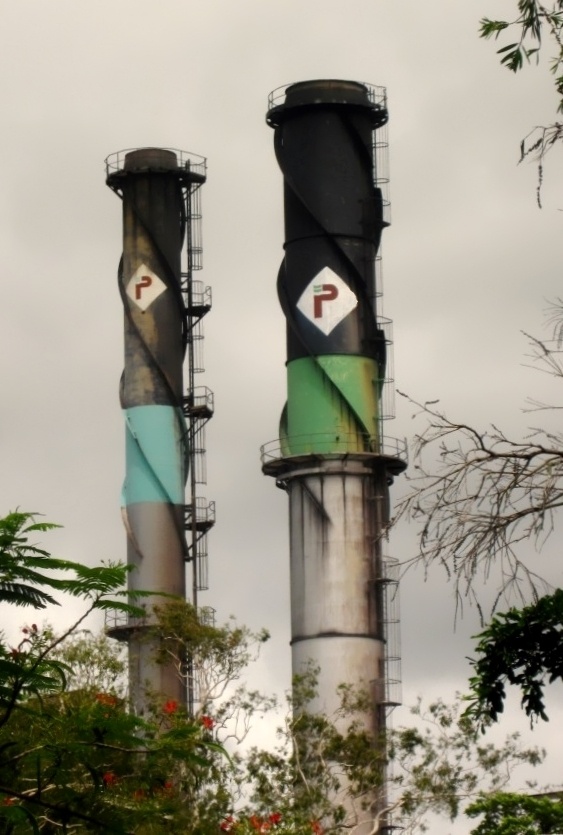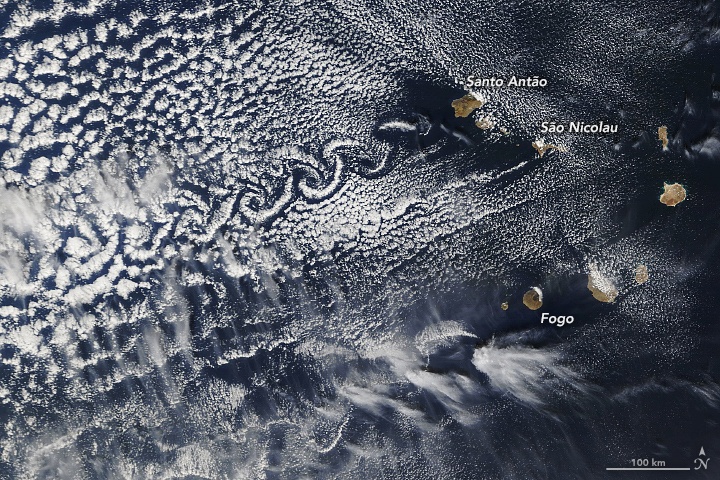This is an image of some of the islands that make up the nation of Cape Verde. While most in that group of ten islands are flat, some are very tall: Fogo, Santa Antão, and São Nicolau. Those three stand well above their compatriots, with Fogo reaching an altitude of 2,829 metres (9,281 feet).
The three tall volcanic islands sometimes interact with the wind to create von Kármán vortices, also called von Kármán vortex streets.
The vortices become visible when clouds form, creating an almost lab-perfect example of the von Kármán effect. As the wind blows past the peaks, the flow alternates around the sides of the peak. That oscillation creates alternating vortices around the object.
A phenomenon called vortex shedding is responsible for the effect. Vortex shedding only occurs at certain wind velocities, and only when the body the wind is blowing past is not streamlined, like the peaks in the picture.
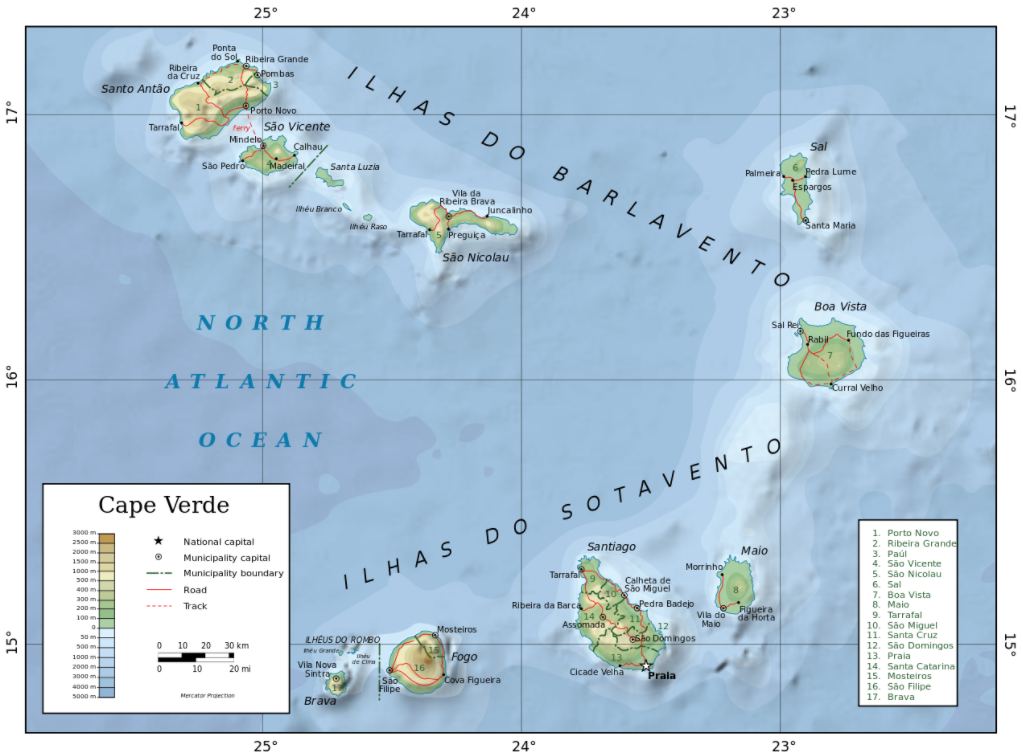
The von Kármán vortex sheets are named after the mathematician, physicist, and aerospace engineer Theodore von Kármán. He was involved in aeronautics and astronautics and was responsible for important advancements in understanding supersonic and hypersonic flows. He was Jewish and originally from Austria-Hungary, then worked at a University in Germany. He fled to the US from Europe out of concern for the rise of Nazism in Germany. He ended up at the California Institute of Technology (Caltech).
Though these features had been observed before, von Kármán was the first to describe them mathematically. As he said, “I found that only the anti-symmetric arrangement could be stable, and only for a certain ratio of the distance between the rows and the distance between two consecutive vortices of each row.”
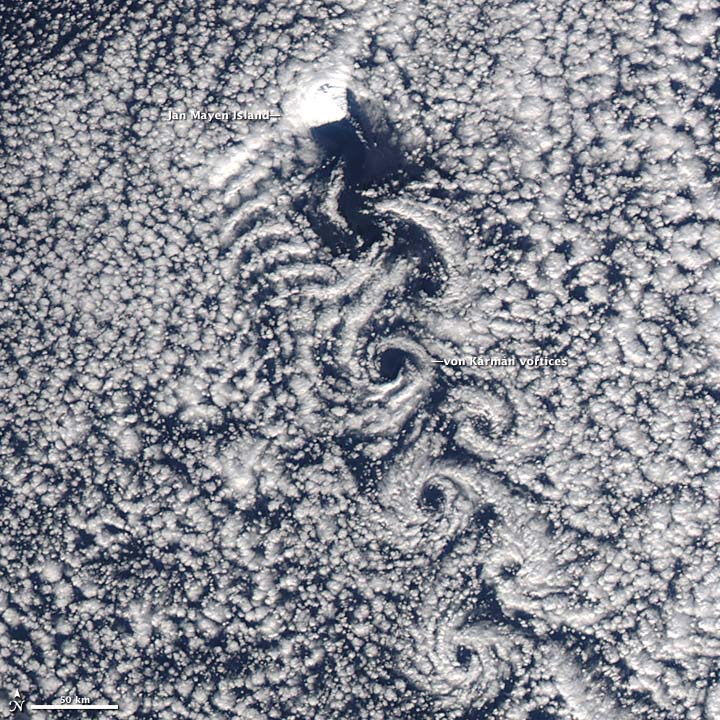
The images of these cool cloud forms were taken by NASA’s Terra satellite and its MODIS (Moderate Resolution Imaging Spectroradiometer) instrument. Terra is the flagship satellite in NASA’s Earth Observing System. They were captured on December 20th, 2020.
Satellites have captured other examples of von Kármán vortex streets. They’ve spotted them in the Greenland Sea, in the Indian Ocean, and elsewhere.
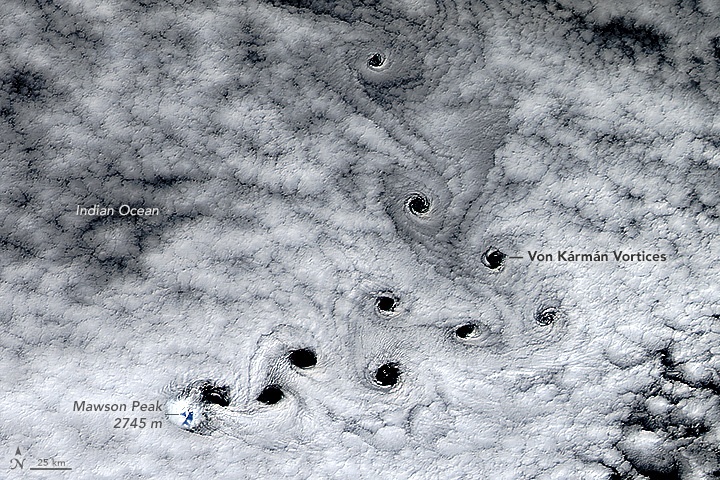
Von Kármán vortex streets don’t only form around mountain peaks. They can form around electrical and communications wires, around car antennae, and around buildings, smokestacks, and bridges. The oscillation, however, is undesirable, and engineers have come up with ways to disrupt the airflow and prevent them from forming. They sometimes put fins or strakes on structures to break up the oscillating pattern.
